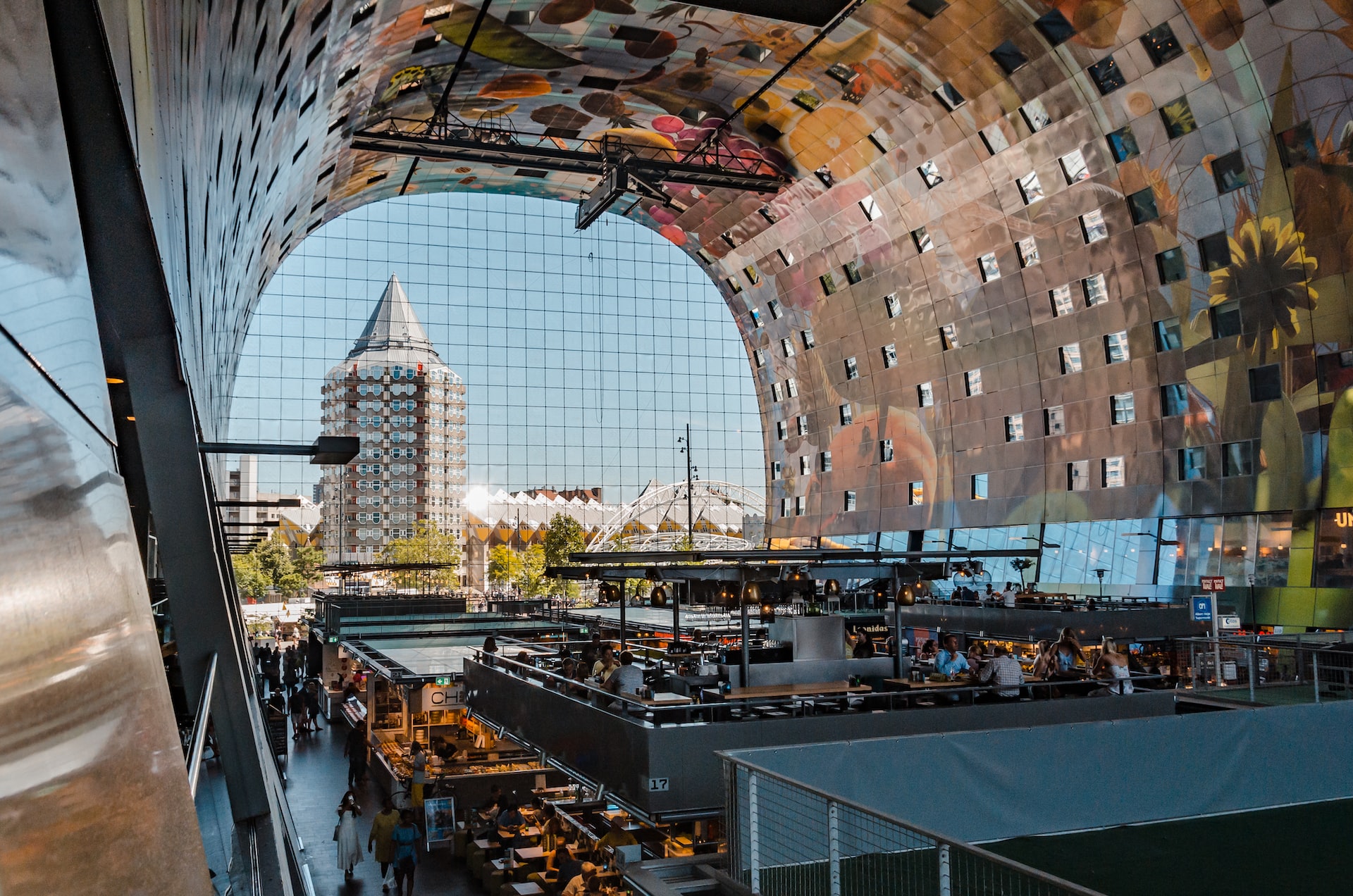Region making and the power of regions - Winy Maas

Winy Maas is a co-founder and principal architect of MVRDV, an interdisciplinary studio that works at the intersection of architecture and urbanism.
Maas has received international acclaim for his range of urban planning and building projects, across all typologies and scales. On 10 July 2014, he delivered a lecture at Architecture and Design Scotland on the power of regions. This is a summary blog of his presentation.
In his introduction to ‘region making and the power of regions’ Winy described that Rotterdam has been identified as a place worth visiting because of the power of iconic architecture and its influence on urbanism (Market hall, Station, Rem Koolhaas skyscraper). He stated we need to better integrate architecture, which needs to be more appropriate and focus beyond objects, and planning which needs to become sexier! Through illustrating several projects Winy showed how the gap between architecture/objects and urbanism/spaces can be bridged, and how successful city regions can be considered by working across scales of thinking.
Oslo waterfront area
In Oslo, Norway, a central waterfront area has challenged the traditional urbanist approach (blocks) to promote denser and more varied built form with lanes and passages between buildings.
Achieving this required changes to local by-laws. We must not be afraid to challenge existing in a drive to improve. Also, we can never anticipate the exact result; certain benefits may be arrived at through coincidence, and we need to stimulate the conditions that encourage surprises.
What might be possible
A further example from Oslo / Norway that mitigates between the small and big scale to work up from the urban scale (architecture/block) was the study of metro/train stops that considered where new stops might be made and linked up to become a network. Instead of presenting a ‘shopping list’ that doesn’t position itself, the study examined the effect and impact of what might be possible.
Starting with the local assets the study asked: how can we make things better, and what might be the impacts? The change was visualised and linked with density studies. Instead of a diagram of nodes, each station was different by combining urbanism, planning, architecture and transport.
Regions of the world
Building upon the idea that strategic issues can be scaled up from smaller starting points, Winy spoke about exploratory studies for ‘regions in the world’ that speculate on possible optimised futures for how different regions might behave, and where activities might best take place. In this study different regions take on different roles in an optimised world.
Reflecting on an imagined role for Switzerland, it might be Europe’s ‘lung’; water retention; grouped settlements; central routes connector; energy (solar, wind) hub.
Speculative ideas become reality
Winy showed how ideas, which initially seem speculative, provocative and visionary, can become reality over time (e.g. solar mountains; hotels at 4000m; limitations on settlement fringe envelopes).
In a further scaling up of ideas, Winy described how Europe (a spread of small things; Edinburgh is ‘cute’) is a globally desirable concept capable of export – people want castles and heritage, walking, cycling, heritage, attractive urban environments. Against a ‘reality’ of cheap, anonymous environments and sprawl Winy showed examples of where the USA, Asia and China seek to replicate European models. Nevertheless, Europe needs to make better use of older central parts of cities rather than their fringes.
What makes a successful city region?
In a further scaling up of ‘what makes a successful city region’ Winy spoke of the importance of agenda making and linking to wider ideals (e.g. low carbon). This can be challenging, but we need courage to discuss what this means and looks like.
The Grand Paris project (where “2% of Paris is fantastic and 98% is not so good”) built upon the possibility to gather evidence, which could be scored and compared with other cities, to set a programme and inform an ambition to improve.
Starting with studies and speculating on possible futures led to the identification of certain projects to reconstruct and change the city (e.g. connect up, think about density, solar energy on roofs, create national park/forest, etc); again this may require the necessity to change by-laws.
Leadership roles
Winy’s final example of Bordeaux, started from the position of ‘agenda making’ to speculate and understand how an area of the city might be transformed. Through considering aspects (e.g. density; mixed uses; heritage; intimate; green; zero energy; connected; sun and daylight) a model was developed which has invited public debate about the future. This example noted the important leadership role of senior politicians to champion and support visionary initiatives.
Header image - Photo by Mike van den Bos on Unsplash
